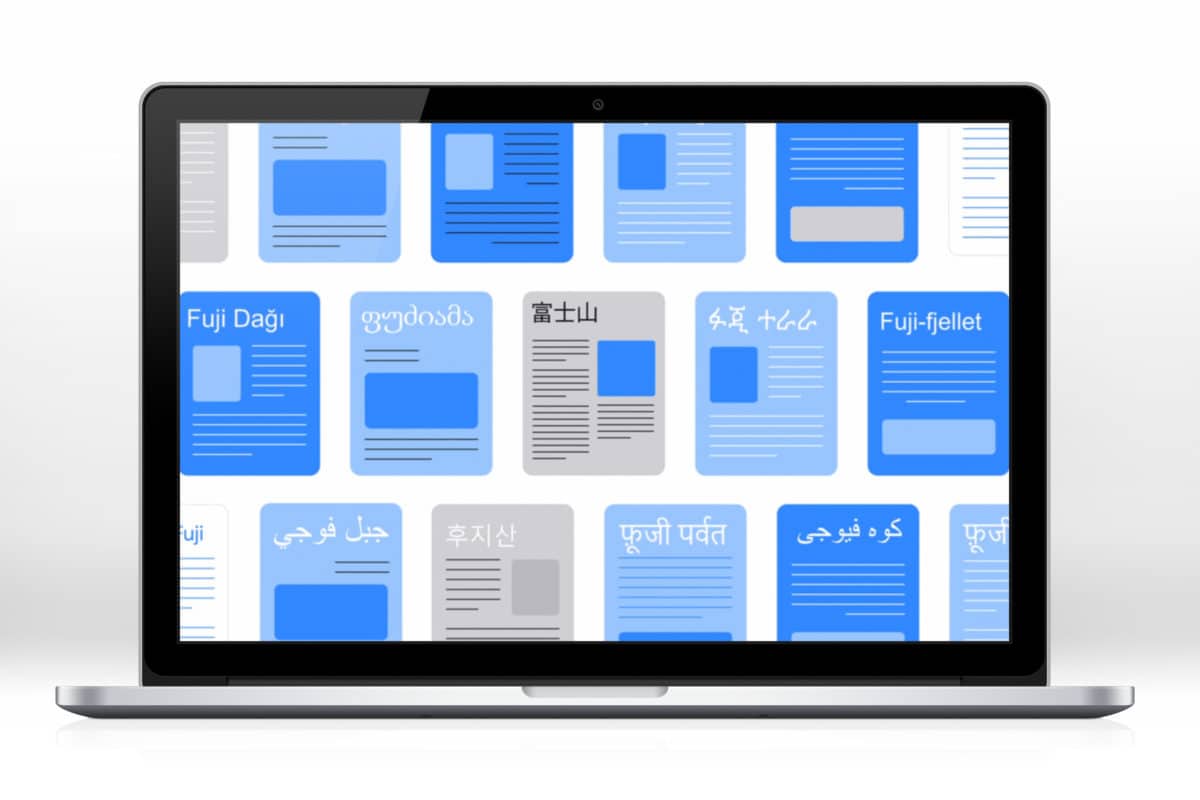Automatically translating your website’s pages and articles into several languages is a dream now possible thanks to AI!
Translation of pages and blog posts, what solutions?
Your website targets international markets, it is multilingual and optimised for international use (hreflang tagging, CDN, etc). What solutions are available to you to translate the pages and articles of your site, and especially to “make it live in several languages” if you have a blog, for example, which supports your inbound marketing strategy? The task can quickly turn out to be resource-intensive (time and/or budget). Especially if your site is in 5 or 10 languages!
Does your company have employees who master all the languages? Perfect! It’s only a question of time and resources… But your employees’ time is precious, isn’t it? Perhaps you could optimise it, as we will see below in this article.
You can also rely on the “Google Translation” solution. Perhaps you have already tested it. Objectively speaking, Google Translation allows you to translate approximately and decode the meaning of a text in a language you do not master, but the level of translation quality is not yet up to the requirements of the majority of our clients…
In most cases, you will therefore use a translation company or freelance translators for each language. This choice will undoubtedly meet your expectations in terms of translation quality, but will of course have a cost, which is normal. It is not to be excluded and is even recommended in most cases for “localisation” issues for the cold content pages of your site (e.g. offer pages or “corporate” pages). But if you keep your site, your blog, your news, your offer alive (Bravo! Your SEO will be all the better for it!), the systematic use of a translator can quickly turn out to be costly and time-consuming for the day-to-day management of the translations of your site’s hot content.
In addition, each of these three solutions will, in the vast majority of cases, require the creation of a new page for each translated version and often also the integration or redesign of this new content.
Is there a complementary or more efficient alternative? Good news, yes!

Automatically translate your website articles into 26 languages – a dream come true!
Quality automatic translation into 26 languages is possible!
The problem of optimising the process of translating and integrating articles on a website has often been raised with us. The development of translation technologies based on artificial intelligence (AI) and machine learning has made a huge leap in recent years! The level of translation of solutions based on artificial intelligence is incomparable with that of Google Translation, for example, although it is very practical.
Therefore, our digital agency offers its clients a module or plugin for automatic translation of articles based on these translation technologies (AI & Machine Learning) and integrated into the WordPress content management solution, for example. In concrete terms, how does it work once the solution has been implemented on your site?
For your blog posts, you simply select the language you want to translate your post into and click on the “translate” button. In a few seconds, the page is translated into the chosen language and the formatting is preserved without any intervention from you! Magic, isn’t it?
And the magic works in 26 languages including: Bulgarian, Chinese, Czech, Danish, English, Estonian, Finnish, German, Greek, Hungarian, Italian, Japanese, Latvian, Lithuanian, Dutch, Polish, Portuguese, Romanian, Russian, Slovak, Slovenian, Swedish…
To illustrate our point, we have just done it without any rewriting on this article in English, Italian and Chinese for example. What do you think? Isn’t it amazing?
Another scenario: you have an e-commerce site built on Woocommerce and a catalogue of 2000 products. The translation can be done automatically this time on all the items and products in your catalogue.
You have a multilingual website project on WordPress or Woocommerce? Would you like to know more or test the level of translation based on one of your contents?